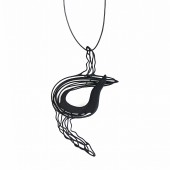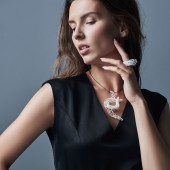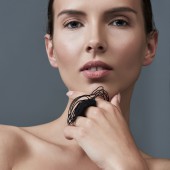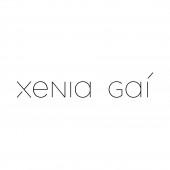Dance Anatomy Ring and Earrings by Ksenia Zagaynova |
Home > Winners > #92713 |
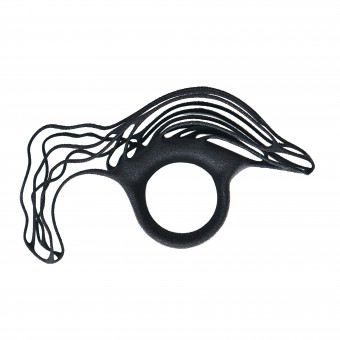 |
|
||||
| DESIGN DETAILS | |||||
| DESIGN NAME: Dance Anatomy PRIMARY FUNCTION: Ring and Earrings INSPIRATION: The Dance Anatomy collection was inspired by contemporary dance. In this work I studied the fixed positions of dancers and the processes existing in their bodies. For example, some muscles are tense and some are relaxed, others are stretched. I have translated these processes into the simplified graphic language and came up with the forms and silhouettes that further became wearable objects (earrings, pendants, rings). UNIQUE PROPERTIES / PROJECT DESCRIPTION: The Dance Anatomy collection represents a reinterpretation of the human body. The lines and shapes look bionic and could remind any other organic creatures. They are 3D-printed in nylon which makes them flexible and damage-resistant. 2 objects can be worn as earrings or pendants after simple replacement of the earwire with a lace or chain. OPERATION / FLOW / INTERACTION: There are 3 objects in this collection, represented in 2 colors. The 2 of 3 can be worn as earrings or pendants. The leather lace or silver ear fixture can be easily inserted and removed when needed. PROJECT DURATION AND LOCATION: The project started in April 2019 in Moscow and finished in the end of June 2019 in Moscow. It was exhibited in Zveno jewelry shop and gallery. |
PRODUCTION / REALIZATION TECHNOLOGY: 3D-modelling, 3D printing in nylon (polyamide). Silver earwire, textile lace. The design was visualized in Rhinoceros, using Tsplines plugin. SPECIFICATIONS / TECHNICAL PROPERTIES: Object 1: H - 10 cm W - 5 cm D - 1.5 cm Object 2: H - 10 cm W - 4.3 cm D - 1.5 cm Object 3: H - 4 cm W - 7.2 cm D - 1.5 cm TAGS: jewelry, design, pendants, earrings, rings, dance RESEARCH ABSTRACT: The objective of the research was to analyze the processes occurring in the body of a dancer and to choose a principle that would allow translating them into graphic language and into real objects. The designer took pictures of dancers in captured dance positions and analyzed muscle tension and stretching in different parts of their bodies. In order to detect the state of muscles the author consulted the anatomy book and a former dancer. The designer used a solid color for those muscles that were keeping balance and were the most tense, the waved lines - for muscles being more relaxed and straight lines - in order to show the stretched parts. CHALLENGE: The hardest part of the research lied in the detection of the right principle that would allow transferring a dancer position into graphic language. The author studied different aspects of dancing, namely the geometry of different dance positions, the cinesphere of a dancing person but these principles did not lead to a necessary esthetic result. In the end the research of the muscles behavior allowed to achieve the right result. Secondly, it was hard to create the 3D models of the objects as they consist of many lines that could not intersect. ADDED DATE: 2019-09-29 11:25:10 TEAM MEMBERS (1) : IMAGE CREDITS: Ksenia Zagaynova, 2019. |
||||
| Visit the following page to learn more: http://xeniagai.ru | |||||
| AWARD DETAILS | |
 |
Dance Anatomy Ring and Earrings by Ksenia Zagaynova is Winner in Jewelry Design Category, 2019 - 2020.· Read the interview with designer Ksenia Zagaynova for design Dance Anatomy here.· Press Members: Login or Register to request an exclusive interview with Ksenia Zagaynova. · Click here to register inorder to view the profile and other works by Ksenia Zagaynova. |
| SOCIAL |
| + Add to Likes / Favorites | Send to My Email | Comment | Testimonials | View Press-Release | Press Kit |
Did you like Ksenia Zagaynova's Jewelry Design?
You will most likely enjoy other award winning jewelry design as well.
Click here to view more Award Winning Jewelry Design.


